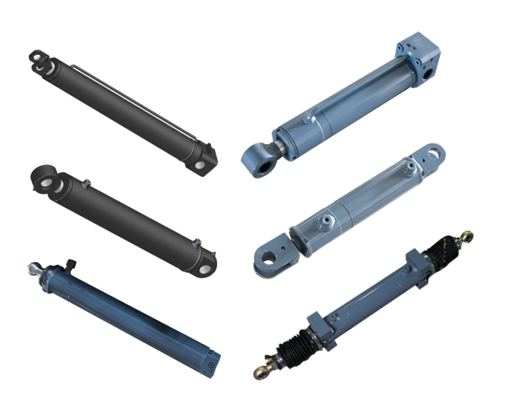When it comes to the world of heavy machinery and lifting equipment, lift cylinders—particularly hydraulic cylinders—are essential components that provide the power and precision necessary for safe and efficient operation. From construction sites to warehouses, these devices are central to a wide variety of applications. But what exactly is a lift cylinder used for, and how do different types like the boom lift hydraulic cylinder or scissor lift hydraulic cylinder differ in their functions?
In this blog post, we’ll explore the core purposes of lift cylinders, examine the types commonly used in aerial and material-handling equipment, and delve into the specifics of aftermarket hydraulic cylinders, shipping considerations, and ordering requirements.
A hydraulic lift cylinder is a mechanical actuator that uses hydraulic fluid under pressure to produce linear motion and force. They’re often employed to lift, push, or support heavy loads—especially in machinery designed for elevation or load-bearing tasks. These cylinders come in various configurations, including single acting cylinders, which apply hydraulic pressure in one direction and rely on gravity or a mechanical force to return.

Aerial work platforms rely heavily on lift cylinders to raise and lower the working deck safely. These platforms are essential for workers operating at height in construction, maintenance, or installation jobs. The boom lift cylinder is a specific type used in telescoping boom lifts, allowing them to extend and retract while carrying personnel or equipment.
A boom lift hydraulic cylinder plays a critical role in adjusting the arm’s angle and height. Whether it's a telescopic or articulating boom, these cylinders must be powerful and precise to ensure stability and performance at various elevations.
The scissor lift hydraulic cylinder is key to the vertical movement of the scissor lift mechanism. These lifts depend on synchronized hydraulic cylinders to maintain platform stability while lifting heavy loads straight upward.
In mobile cranes mounted on trucks, hydraulic cylinders control various functions including boom articulation, stabilizer deployment, and even load lifting. The lift cylinder in these applications must be robust and designed for high-load scenarios.
When sourcing hydraulic cylinders, it’s important to consider both OEM and aftermarket hydraulic cylinders. Aftermarket options can offer cost-effective solutions without sacrificing quality, especially when original parts are unavailable or prohibitively expensive.
Additionally, many suppliers require a minimum order, especially for customized or bulk components. Be sure to check ordering policies to ensure you meet supplier requirements.
For customers based in the United States or Canada, ground shipping is often available for hydraulic cylinders, offering a balance of affordability and delivery speed. However, due to the weight and size of certain cylinders—especially those used in truck-mounted cranes or boom lifts—shipping methods may vary based on the supplier’s logistics network.
In summary, lift cylinders—especially hydraulic lift cylinders—are integral to the functionality of various lifting equipment, from aerial work platforms to boom lifts and scissor lifts. Whether you’re using single acting cylinders for a specific mechanical return function or opting for aftermarket hydraulic cylinders to replace worn-out OEM parts, understanding their roles and capabilities can help you make informed decisions for your equipment needs.
When purchasing, always check for minimum order policies, and consider ground shipping options to manage logistics efficiently. The right hydraulic cylinder, whether it's a boom lift hydraulic cylinder, scissor lift hydraulic cylinder, or truck-mounted crane component, can significantly enhance the performance and reliability of your machinery.